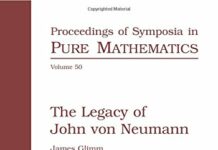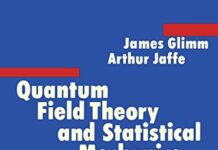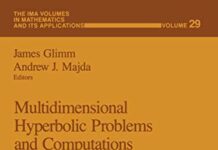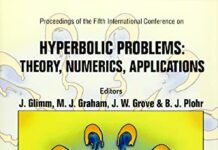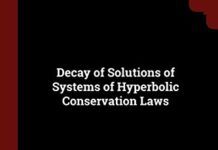
Ebook Info
- Published: 1987
- Number of pages: 535 pages
- Format: PDF
- File Size: 37.31 MB
- Authors: James Glimm
Description
Describes fifteen years’ work which has led to the construc- tion of solutions to non-linear relativistic local field e- quations in 2 and 3 space-time dimensions. Gives proof of the existence theorem in 2 dimensions and describes many properties of the solutions.
User’s Reviews
Reviews from Amazon users which were colected at the time this book was published on the website:
⭐This first Glimm-Jaffe edition as well as the extended second edition are the only textbook treatments of the Osterwalder-Schrader axioms and reconstruction theorem. The mathematically more tractable and usually convergent Euclidean theory is obtained by Wick rotating the time coordinate axis by 90 degrees (i goes to -1) in the Feynman Path Integral so that quantities (Green function integrals) arising from its expansion become exponentially damped and convergent rather than oscillatory. Under what conditions can we get the Feynman amplitudes in Minkowskian spacetime from these Euclidean quantities. This of course is the Osterwalder-Schrader theory. A thorough grounding in functional analysis and distribution theory at the level of the Reed-Simon texts(mostly volumes 1 and 2)is needed to understand the proofs. This material has lately found application in loop quantum gravity. For this alone either edition is worth having.
⭐People who complain that this book is uneccessarily hard to read probably have bought it for the wrong reasons, guided by its deceptive title. This is NOT a standard book on quantum mechanics via path integrals, as is the marvellous book by Feynman and Hibbs, among others. This is the bible on Constructive QFT (CQFT), the most recent of all attempts to put QFT on a sound mathematical basis, written by two of its founders. This IS hard physics AND hard math (Wiener integrals, unbounded operators, etc.).The book is remarkable because it collects the basics and most of the memorable results on CQFT: renormalizability of two and three-dimensional models, constructive gauge theory (indispensable for lattice gauge theories), relatioships with statistical mechanics, consistency of non-linear models, etc., associated with the insight that only the pioneers can give.Although the book is reasonably self-contained, it is strongly recommended to have a fair grounding on analysis, quantum mechanics and basic quantum field theory. The last part of the book (chapters 13-23) is meant for pros, requiring more maturity.Anyway, it’s tough to find similar texts on this subject. The reader who is interested in this field of research and have some guts for tough mathematical physics certainly will be rewarded. This tome surely stands on its subject in the same footing that Haag’s “Local Quantum Physics” on Algebraic QFT (another deceptive title).
⭐The book extremely advanced. My PhD in theoretical particle physics was nowhere near sufficient for comprehension. But I have a more personal beef. Near the beginning of this book is the glib statement that quantum field theory (QFT) has both a c –> infinity limit and an h –> 0 limit, somehow depending on the “sequence of states” used. So far a I know, this is utterly specious. A c –> infinity limit would presumably give you ordinary quantum mechanics with Coulomb forces. But you must also assume the absence of anti-particles. More importantly, there are no operators in interacting QFT that even begin to define particles at finite times. So what are they talking about? Their description of the h –> 0 limit is botched as well, as I recall, referring perhaps to tree diagrams, which is silly for reasons too technical to mention here. To summarize, as a person who has been interested in and unable to find those two limits for well over 30 years, it was insulting to see their existence so blithely assumed without a word of explanation or a reference. For shame!
Keywords
Free Download Quantum Physics: A Functional Integral Point of View 2nd Edition in PDF format
Quantum Physics: A Functional Integral Point of View 2nd Edition PDF Free Download
Download Quantum Physics: A Functional Integral Point of View 2nd Edition 1987 PDF Free
Quantum Physics: A Functional Integral Point of View 2nd Edition 1987 PDF Free Download
Download Quantum Physics: A Functional Integral Point of View 2nd Edition PDF
Free Download Ebook Quantum Physics: A Functional Integral Point of View 2nd Edition
